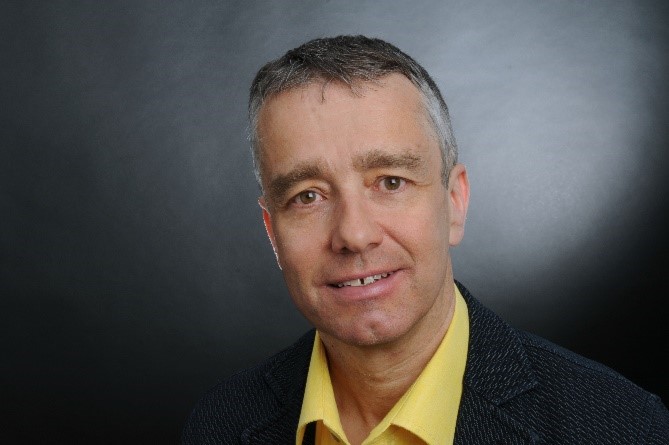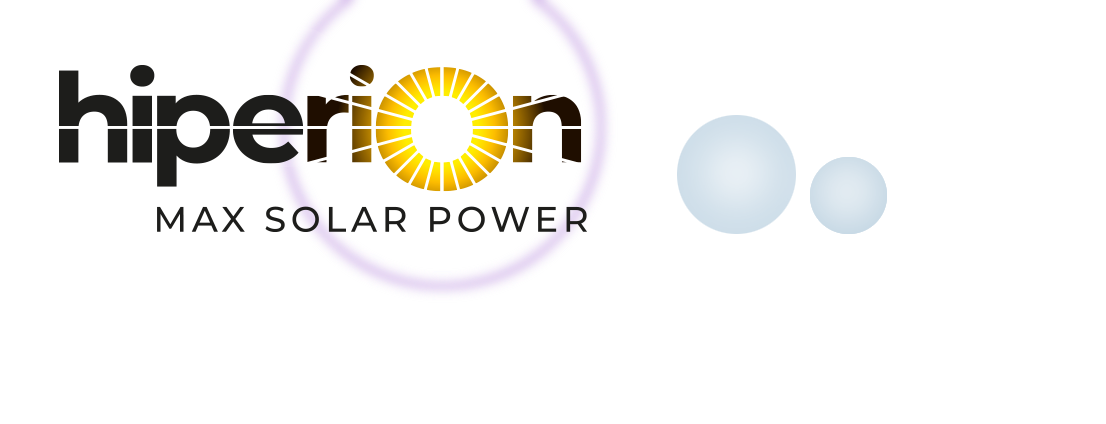Interview with Patrick Hofer-Noser, CEO of 3S Swiss Solar Solutions
HIPERION Project Newsletter n°6 / November 2022

Question 1 (Q1): Patrick, could you please introduce yourself and explain your career until you became the CEO of 3S Swiss Solar Solutions, one of the key solar manufacturing companies in Switzerland?
Answer 1 (A1): Since my early childhood I love being in the nature. It is my passion to engage myself to save nature for the future generations. After my vocational training I studied electrical engineering and made a PhD in power electronics. My activities around the Rio Climate conference in 1992 opened my eyes for the urgency to take action. I joined Atlantis, one of the first pioneer companies in the solar field. In 2001 we founded 3S Swiss Solar Systems AG, which became a technology leader for solar panel manufacturing equipment until 2010. After the merge with Meyer Burger we closed the gap and acquired the leading cell manufacturing company. I had different executive positions within the Meyer Burger group. When Meyer Burger decided to close the production in Switzerland, we took it over and formed 3S Swiss Solar solutions. Our deep expertise in manufacturing equipment helps us today to have the most advanced production line for the manufacturing of building integrated solar panels. With our products home owners can turn their buildings in beautiful looking CO2 free buildings, helping to preserve our climate.
Q2: How was the 3S company involved in the HIPERION project?
A2: We strongly believe that manufacturing of the complete value chain needs to be brought back to Europe. We are heavily investing in automated production of solar products. HIPERION products are one possibility to continue increasing the energy yield of solar panels. Higher yield per surface is particularly important when surface is limited, which is a situation that occurs in many parts of Europe. Our history and knowledge in manufacturing as well as the design of systems are important assets contributing to the HIPERION project, which can thus benefit from more than 20 years of photovoltaic (PV) manufacturing expertise in Europe.
Q3: In the HIPERION project, 3S is the leader of the work package dedicated to the Blueprint evaluation of the HIPERION modules. Could you explain what are the main objectives and activities of this work package?
A3: We evaluate technically as well as economically the blueprint solution developed out of the viewpoint of the manufacturer of the products and make it ready for commercialization. Beside the technical solutions, the impact of the Bill-of-materials (BOM) and the expected gross margins are crucial for the success of the product at a manufacturer level. At the same time, also from the point of view of the end costumer it is important to analyse the levelized costs of electricity (LCOE) and the resulting return-on-investment (ROI) in various European locations. Therefore, both rooftop (residential, commercial) and utility market will be analysed and results of the pilot projects will be used to verify the assumptions.
Manufacturing is one thing but it is important that new products have a positive impact on the environment. Therefore, we perform the lifecycle analysis and evaluate the environmental impact of the HIPERION products in this work package.
Q4: What are the main challenges related to the blueprint evaluation? Which are 3S’ key assets that make of 3S the best suited partner to lead these activities?
A4: The integration of the innovative hybrid modules such as the HIPERION product requires time and skills. You need the necessary experience to industrialise such production steps and achieve a certain throughput. A conventional solar module manufacturer is optimised for very high throughput of a standard module that offers a few individual product features. At 3S, however, we can run more complex products through our line with over 20 years of experience in the Building Integrated Photovoltaics (BIPV) sector. Our adaptability is well known and this is one of our core competences.
Q5: What are the major achievements so far?
A5: In cooperation with the research partner CSEM, the production process of the needed HIPERION module components was successfully transferred and implemented into the 3S production line. In our role as leader of the work package dedicated to the HIPERION Blueprint evaluation, several pilot sites around the world (Portugal, Switzerland, Chile) were identified, which are now gradually being set up and going online. With a detailed and constantly deepening LCA and LCOE analysis, we are simultaneously testing the economic efficiency and sustainability.
Q6: How will 3S benefit from the results generated in HIPERION? What are the perspectives for exploitation?
A6: So far 3S got an in-depth understanding of the climate change contributors at a BOM level that led us to perform our own internal life cycle assessments. Out of the results we could define the ecological footprint of our products in comparison to HIPERION products. On the exploitation level, we figured alongside with our partners that energy density per surface is a key factor, but that the cost targets of the more complex products can only be reached with mass production. Lower LCOE can be reached, but CapEx and OpEx remain a tough challenge for low volume hight cost products.
Q7: Given your experience in solar panels manufacturing, what are the challenges linked to the industrialisation of the HIPERION hybrid modules?
A7: The main challenge is to reach volume production and bridge the death valley. In other words: to industrialise innovative technologies, a high margin niche market needs to be targeted first. The first roll out needs support and founds in order that volume can be reached to obtain an interesting LCOE. The competition in this field is mainly located in Asia. If Europe wants to become a major producer, programmes tailored for PV like the IPCEI (Important Project of Common European Interest) need to be implemented, which allow direct sectorial support for the Member States. And hopefully Switzerland will join the EU in this matter. Else we have a substantial risk that these technologies will not mature, or either will be transferred to the US or to Asia. As an example, since the past year, the US are implementing massive programmes to secure domestic production for critical goods such as PV.
DISCLAIMER: The information, statements and opinions in the above interview are personal views of the individuals involved in the HIPERION project and do not necessarily reflect the views of the HIPERION consortium as a whole, nor of the European Commission. None of them shall be liable for any use that may be made of the information contained herein.




